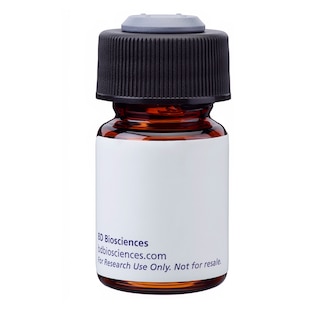-
Training
- Flow Cytometry Basic Training
-
Product-Based Training
- BD FACSDiscover™ S8 Cell Sorter Product Training
- Accuri C6 Plus Product-Based Training
- FACSAria Product Based Training
- FACSCanto Product-Based Training
- FACSLyric Product-Based Training
- FACSMelody Product-Based Training
- FACSymphony Product-Based Training
- HTS Product-Based Training
- LSRFortessa Product-Based Training
- Advanced Training
-
- BD FACSDiscover™ S8 Cell Sorter Product Training
- Accuri C6 Plus Product-Based Training
- FACSAria Product Based Training
- FACSCanto Product-Based Training
- FACSLyric Product-Based Training
- FACSMelody Product-Based Training
- FACSymphony Product-Based Training
- HTS Product-Based Training
- LSRFortessa Product-Based Training
- United States (English)
-
Change country/language
Old Browser
This page has been recently translated and is available in French now.
Looks like you're visiting us from {countryName}.
Would you like to stay on the current country site or be switched to your country?




Expression of CD29 on pig peripheral blood leukocytes. Pig whole blood was stained with either purified mAb NaM160-1A3 (filled histograms) or purified mouse IgG1, κ isotype control mAb MOPC-31C (Cat. No. 557273, open histograms), followed by FITC-conjugated goat anti-mouse Ig (multiple adsorption, Cat. No. 554001). Erythrocytes were lysed (PharM Lyse™, Cat. No. 555899), non-viable leukocytes were excluded by staining with 7-AAD (Via-Probe™, Cat. No. 555816/555815), and lymphocytes (left panel), monocytes (center panel), and granulocytes (right panel) were gated according to their light-scatter profiles. Multi-color staining (data not shown) demonstrates that most CD4-CD8+ T and NK cells and most CD4+CD8+ memory T cells make up the CD29bright lymphocyte population, CD4+CD8- T lymphocytes are CD29dim, and the CD4-CD8- lymphocytes have CD29negative and CD29dim subpopulations. Flow cytometry was performed on a FACSCalibur™ (BD Biosciences, San Jose, CA).


BD Pharmingen™ Purified Mouse Anti-Pig CD29

Regulatory Status Legend
Any use of products other than the permitted use without the express written authorization of Becton, Dickinson and Company is strictly prohibited.
Preparation And Storage
Product Notices
- Since applications vary, each investigator should titrate the reagent to obtain optimal results.
- Please refer to www.bdbiosciences.com/us/s/resources for technical protocols.
- Caution: Sodium azide yields highly toxic hydrazoic acid under acidic conditions. Dilute azide compounds in running water before discarding to avoid accumulation of potentially explosive deposits in plumbing.
- Sodium azide is a reversible inhibitor of oxidative metabolism; therefore, antibody preparations containing this preservative agent must not be used in cell cultures nor injected into animals. Sodium azide may be removed by washing stained cells or plate-bound antibody or dialyzing soluble antibody in sodium azide-free buffer. Since endotoxin may also affect the results of functional studies, we recommend the NA/LE (No Azide/Low Endotoxin) antibody format, if available, for in vitro and in vivo use.
Companion Products


.png?imwidth=320)

The NaM160-1A3 monoclonal antibody specifically binds to the 116-kDa integrin β1 chain (CD29). CD29 is expressed on the cell surface as a heterodimer with one of the distinct integrin α chains. With α1 through α6 (CD49a through CD49f), it forms the VLA-1 through VLA-6 complexes, respectively, and with αv (CD51), it forms αvβ1 integrin. As a result, CD29 has a broad tissue distribution, including leukocytes, endothelia, epithelia, and oocytes. Porcine CD29 is believed to be a major target for natural antibodies involved in rejection of pig-to-human xenografts, and a mAb to block recognition of pig CD29 may have therapeutic applications. NaM160-1A3 mAb does not crossreact with human peripheral blood lymphocytes or umbilical cord vein endothelial cells.
Development References (4)
-
Jiménez-Marín A, Garrido JJ, de Andrés-Cara DF, Morera L, Barbancho MJ, Llanes D. Molecular cloning and characterization of the pig homologue to human CD29, the integrin beta1 subunit. Transplantation. 2000; 70(4):649-655. (Biology). View Reference
-
Linfor J, Berger T. Potential role of alphav and beta1 integrins as oocyte adhesion molecules during fertilization in pigs. J Reprod Fertil. 2000; 120(1):65-72. (Biology). View Reference
-
Richard C, Thibaudeau K, Charreau B, et al. Characterization of a murine monoclonal antibody specific for swine beta1 integrin. Xenotransplantation. 1998; 5(1):75-83. (Immunogen: ELISA, Immunoaffinity chromatography, Immunocytochemistry (cytospins), Immunofluorescence, Immunoprecipitation, Western blot). View Reference
-
Springer TA. Adhesion receptors of the immune system. Nature. 1990; 346(6283):425-434. (Biology). View Reference
Please refer to Support Documents for Quality Certificates
Global - Refer to manufacturer's instructions for use and related User Manuals and Technical data sheets before using this products as described
Comparisons, where applicable, are made against older BD Technology, manual methods or are general performance claims. Comparisons are not made against non-BD technologies, unless otherwise noted.
For Research Use Only. Not for use in diagnostic or therapeutic procedures.
Report a Site Issue
This form is intended to help us improve our website experience. For other support, please visit our Contact Us page.